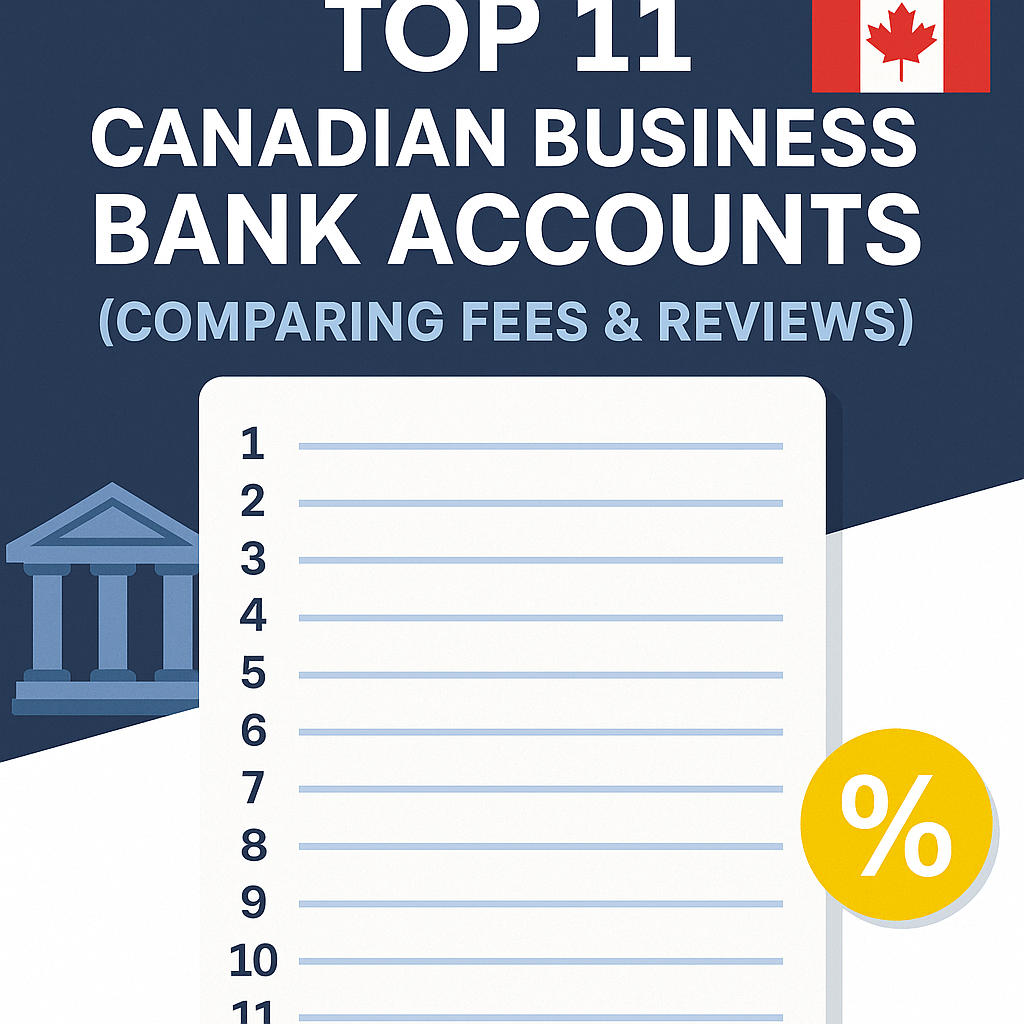GOOGLE ADS MANAGEMENT
ALL SERVICES- GRAPHIC DESIGN & BRANDING
➥ WEBSITE DESIGN TORONTO
➥ TORONTO LOGO DESIGN
➥ BROCHURE GRAPHIC DESIGN
➥ INFOGRAPHIC DESIGN
➥ BUSINESS CARD DESIGN
➥ PACKAGE DESIGN TORONTO
➥ ILLUSTRATION DESIGN
➥ ADVERTISING POSTER DESIGN
➥ BRANDING STRATEGY & SERVICES- ➤ VIEW ALL SERVICES
WEB DEVELOPMENT & SUPPORT
➥ CUSTOM WEB DESIGN TORONTO
➥ ECOMMERCE WEBSITE DESIGN TORONTO
➥ WEBSITE MAINTENANCE SERVICES
➥ SHOPIFY WEBSITE DESIGN
➥ SHOPIFY EXPERTS TORONTO
➥ WORDPRESS DEVELOPMENT
➥ WORDPRESS MAINTENANCE- ➤ VIEW ALL SERVICES
WEBSITE MARKETING & CONTENT
➥ SEO PACKAGES TORONTO
➥ TORONTO SOCIAL MEDIA AGENCY
➥ CONTENT MARKETING TORONTO
➥ PPC MANAGEMENT TORONTO
➥ AFFILIATE MARKETING CANADA
➥ STRATEGIC CONSULTATION- ➤ VIEW ALL SERVICES
ABOUT
RESOURCES- LET’S CHAT
Questions? Call us at
647-348-4995

GOOGLE ADS MANAGEMENT
ALL SERVICES- GRAPHIC DESIGN & BRANDING
➥ WEBSITE DESIGN TORONTO
➥ TORONTO LOGO DESIGN
➥ BROCHURE GRAPHIC DESIGN
➥ INFOGRAPHIC DESIGN
➥ BUSINESS CARD DESIGN
➥ PACKAGE DESIGN TORONTO
➥ ILLUSTRATION DESIGN
➥ ADVERTISING POSTER DESIGN
➥ BRANDING STRATEGY & SERVICES- ➤ VIEW ALL SERVICES
WEB DEVELOPMENT & SUPPORT
➥ CUSTOM WEB DESIGN TORONTO
➥ ECOMMERCE WEBSITE DESIGN TORONTO
➥ WEBSITE MAINTENANCE SERVICES
➥ SHOPIFY WEBSITE DESIGN
➥ SHOPIFY EXPERTS TORONTO
➥ WORDPRESS DEVELOPMENT
➥ WORDPRESS MAINTENANCE- ➤ VIEW ALL SERVICES
WEBSITE MARKETING & CONTENT
➥ SEO PACKAGES TORONTO
➥ TORONTO SOCIAL MEDIA AGENCY
➥ CONTENT MARKETING TORONTO
➥ PPC MANAGEMENT TORONTO
➥ AFFILIATE MARKETING CANADA
➥ STRATEGIC CONSULTATION- ➤ VIEW ALL SERVICES
ABOUT
RESOURCES- LET’S CHAT
Questions? Call us at
647-348-4995

GOOGLE ADS MANAGEMENT
ALL SERVICES- GRAPHIC DESIGN & BRANDING
➥ WEBSITE DESIGN TORONTO
➥ TORONTO LOGO DESIGN
➥ BROCHURE GRAPHIC DESIGN
➥ INFOGRAPHIC DESIGN
➥ BUSINESS CARD DESIGN
➥ PACKAGE DESIGN TORONTO
➥ ILLUSTRATION DESIGN
➥ ADVERTISING POSTER DESIGN
➥ BRANDING STRATEGY & SERVICES- ➤ VIEW ALL SERVICES
WEB DEVELOPMENT & SUPPORT
➥ CUSTOM WEB DESIGN TORONTO
➥ ECOMMERCE WEBSITE DESIGN TORONTO
➥ WEBSITE MAINTENANCE SERVICES
➥ SHOPIFY WEBSITE DESIGN
➥ SHOPIFY EXPERTS TORONTO
➥ WORDPRESS DEVELOPMENT
➥ WORDPRESS MAINTENANCE- ➤ VIEW ALL SERVICES
WEBSITE MARKETING & CONTENT
➥ SEO PACKAGES TORONTO
➥ TORONTO SOCIAL MEDIA AGENCY
➥ CONTENT MARKETING TORONTO
➥ PPC MANAGEMENT TORONTO
➥ AFFILIATE MARKETING CANADA
➥ STRATEGIC CONSULTATION- ➤ VIEW ALL SERVICES
ABOUT
RESOURCES- LET’S CHAT
Questions? Call us at
647-348-4995

GOOGLE ADS MANAGEMENT
ALL SERVICES- GRAPHIC DESIGN & BRANDING
➥ WEBSITE DESIGN TORONTO
➥ TORONTO LOGO DESIGN
➥ BROCHURE GRAPHIC DESIGN
➥ INFOGRAPHIC DESIGN
➥ BUSINESS CARD DESIGN
➥ PACKAGE DESIGN TORONTO
➥ ILLUSTRATION DESIGN
➥ ADVERTISING POSTER DESIGN
➥ BRANDING STRATEGY & SERVICES- ➤ VIEW ALL SERVICES
WEB DEVELOPMENT & SUPPORT
➥ CUSTOM WEB DESIGN TORONTO
➥ ECOMMERCE WEBSITE DESIGN TORONTO
➥ WEBSITE MAINTENANCE SERVICES
➥ SHOPIFY WEBSITE DESIGN
➥ SHOPIFY EXPERTS TORONTO
➥ WORDPRESS DEVELOPMENT
➥ WORDPRESS MAINTENANCE- ➤ VIEW ALL SERVICES
WEBSITE MARKETING & CONTENT
➥ SEO PACKAGES TORONTO
➥ TORONTO SOCIAL MEDIA AGENCY
➥ CONTENT MARKETING TORONTO
➥ PPC MANAGEMENT TORONTO
➥ AFFILIATE MARKETING CANADA
➥ STRATEGIC CONSULTATION- ➤ VIEW ALL SERVICES
ABOUT
RESOURCES- LET’S CHAT
Questions? Call us at
647-348-4995
![]()
![]()
![]()

- March 14, 2024
-
Liam Hunt
Less than 15 years after Shopify launched its now-famous API (Application Programming Interface), the e-commerce giant has solidified itself as the world leader in online vending. In Canada, many brand names rely on Shopify for generating nearly all of their online sales revenue, including Leon’s ($300M in revenue), Staples ($1B), and The Brick ($500M).
Whether you’re a budding entrepreneur or an established brand, you need to optimize your Shopify store if you want to stay competitive. That’s where we come in. As Toronto-based Shopify experts, we’ve helped countless e-commerce vendors boost their sales and pad their bottom line by properly building, optimizing, and marketing their Shopify stores.
In this guide, we’ll discuss what makes a Shopify marketing campaign effective, how to run Shopify ads, and provide you with actionable insights to elevate your e-commerce game. Let’s dive in!
1. Connect With Your Target Audience Using Social Media
Social media platforms like Facebook, Instagram, and TikTok are not just for sharing cat videos and memes. They’re a gold mine for e-commerce businesses. Here’s why:
- Explosive Growth: Research predicts that social e-commerce will surge by 300% faster than traditional e-commerce, reaching a staggering $1.2 trillion by 2025.
- Consumer Behavior: Approximately half of all adults in the US made purchases through social media in 2021. Canadians are no exception, with a growing appetite for seamless shopping experiences.
- Strategic Focus: Rather than spreading yourself thin across all platforms, concentrate on the top two where your target customers hang out. Quality over quantity, eh?
Pro Tip: Observe your competitors’ social media strategies. What content resonates with their audience? Learn from their successes and adapt them to your brand.
If you need help with that process, consider hiring our team of e-commerce and Shopify experts to get the ball rolling today.
2. Grow Traffic with a Blog
Blogging isn’t just for fashionistas and foodies. It’s a powerful tool for e-commerce too. Here’s why:
- SEO Magic: Each blog post is an opportunity to target long-tail keywords related to your niche. The more relevant content you create, the higher your chances of ranking on Google.
- Educate and Engage: Use your blog to educate your audience about your products and services. Share tips, success stories, and industry insights, and encourage thought leaders in your industry to share your content. Be the go-to resource they trust.
- Credibility Boost: Consistent blogging establishes you as a credible source in your industry. Plus, it keeps your website fresh and dynamic.
The bottom line is that, if you run a Shopify store, you should run a blog too. Establishing your brand as a leader in your market or industry can go a long way toward building trust and name recognition for your store, not to mention search engine visibility benefits.
3. Optimize Your SEO Strategy for Shopify Success
Search Engine Optimization (SEO) is the secret sauce that can catapult your Shopify store to the top of search engine results pages. Here’s how you can harness its power:
- Keyword Research: Begin by identifying relevant keywords specific to your products or services. Think about what your potential customers might search for. Tools like Ahrefs and SEMrush can be your trusty companions, and both offer free trials.
- On-Page Optimization: Once you have your keywords, sprinkle them strategically throughout your website. Optimize your product descriptions, meta titles, and alt tags for images. Remember, Google loves well-organized content.
- Mobile-Friendly Design: Canadians are avid mobile users. About 34% of all Canadian e-commerce is done on mobile devices. Ensure your Shopify store is responsive and loads seamlessly on smartphones and tablets. Google prioritizes mobile-friendly sites in its rankings.
- Local SEO: If you’re a Canadian business, tap into local SEO. Claim your Google My Business listing, include accurate business information, and encourage customer reviews. Local citations matter!
- Content is King: Regularly update your blog with high-quality, informative content. Share industry insights, success stories, and tips related to your niche. Google rewards fresh, relevant content.
If you need help writing engaging, informative content in your brand’s unique voice, consider consulting with our team of content marketing experts to craft a winning strategy today.
Pro Tip: Keep an eye on your competitors. What keywords are they ranking for? Analyze their backlink profiles using software like SEMrush or Ahrefs. Learn from their successes and adapt your strategy accordingly.
Remember, SEO isn’t a one-time fix—it’s an ongoing process. Stay committed, track your progress, and watch your Shopify store climb the ranks.
4. Discovering Unicorn Keywords: Balancing Volume and Difficulty
Keywords act as the compass guiding users to your Shopify store. But not all keywords are created equal. The best ones are called “unicorns”—highly sought after, yet challenging to find. Let’s take a quick look at the art of discovering these mythical “unicorn” keywords:
Understanding Keyword Difficulty (KD)
Keyword Difficulty (KD) measures how hard it is to rank for a specific keyword. It’s like climbing a mountain—the steeper the slope, the tougher the journey. When choosing keywords, strike a balance between volume and difficulty. Here’s how:
- Volume Matters: Aim for keywords with decent search volume. A good starting point could be around 100 searches per month. Remember, it’s quality over quantity.
- Low KD: Seek keywords with a KD score below 30. These are the golden tickets—the ones that aren’t fiercely contested by big players.
- Long-Tail Keywords: Unicorns often hide in long-tail phrases. These are specific, niche queries that may have lower search volume but are easier to rank for. (Example: “Handmade leather wallets for men.”)
Unicorn Hunting Techniques
- Keyword Research Tools: Leverage tools like SEMrush, Ahrefs, or Google Keyword Planner. Look for keywords that fit the sweet spot—reasonable volume and low KD.
- Competitor Analysis: Spy on your competitors. What keywords are they ranking for? Identify gaps and opportunities.
- Topic Clusters: Group related keywords into clusters. Create pillar content around broad topics and sprinkle long-tail keywords within.

Make sure you include these keywords in your page titles, product listing descriptions, and page metadata.
Crafting Content Around Unicorns
- High-Value Pages: Assign your unicorn keywords to high-value pages—product pages, category pages, or landing pages. Make sure your content provides unique value for your readers.
- Quality Content: Create informative, engaging content around these keywords. Solve problems, answer questions, and provide value.
- User Intent: Understand user intent. Are they looking to buy, learn, or compare? Tailor your content accordingly.
Remember, unicorns don’t reveal themselves easily. You need to spend time getting to know how to properly use keyword research software to find keywords with the right KD-to-Volume balance. Patience and persistence pay off.
However, if you’re short on time—we’ve got your back. Hire our SEO marketing experts today to handle your keyword research and implementation process.
5. Crafting Irresistible Product Descriptions
When it comes to Shopify marketing, your product descriptions are like your sales representatives. They must charm, inform, and persuade potential buyers. Here’s how to perfect them.
1. Know Your Audience
Before you put pen to paper (or fingers to keyboard), understand your target audience. What are their pain points? What motivates them to make a purchase? Speak their language—whether it’s casual and friendly or professional and technical.
2. The Power of Storytelling
Humans love stories. We’re wired for them. So, don’t just describe your product; tell its story. Imagine a customer browsing your handmade leather wallets. Instead of a bland list of features, transport them to the cobbled streets of Florence, where skilled artisans meticulously craft each wallet. Paint a vivid picture of quality, tradition, and craftsmanship.
3. Features vs. Benefits
Let’s say you’re running Shopify ads for high-tech RFID-blocking wallets. Sure, your wallet has RFID-blocking technology and six card slots. But what does that mean for the customer? Translate features into benefits. For example:
- Feature: RFID-blocking lining
- Benefit: Safeguard your credit cards from digital pickpockets.
- Feature: Six card slots
- Benefit: Organize your essentials elegantly
Remember, you always want to sell the benefit of the product, not the feature.
4. Use Sensory Language
Appeal to the senses. Describe the supple leather—the way it feels under fingertips, the faint scent of tannins. Make your customers imagine holding that wallet, slipping it into their pocket, and feeling a sense of sophistication.
5. Inject Personality
You’re not a robot, so don’t write like one. Inject personality into your descriptions. If your brand is playful, sprinkle in some humor. If it’s minimalist, keep it concise and elegant. Be relatable, like a friend recommending a favorite product.
6. Calls to Action (CTAs)
Don’t leave your customers hanging. End each description with a clear CTA. Whether it’s “Add to Cart,” “Shop Now,” or “Upgrade Your Style,” guide them toward the next step.
Pro Tip: Test your descriptions. A/B test different versions to see what resonates best with your audience. And don’t forget to optimize for mobile—many shoppers browse on their phones.
6. Enhancing Shopify Store Performance through Technical SEO
Technical SEO is one of the key elements of any Shopify marketing strategy. Ensuring your store’s structure is optimized for search engines to increase your visibility. Here’s how you can fine-tune your technical SEO:
| Aspect | Details |
|---|---|
| Site Speed | Use Google PageSpeed Insights to improve loading times. |
| Mobile Responsiveness | Ensure the site is optimized for all devices. |
| Structured Data | Implement schema markup for better search engine understanding. |
| URL Structure | Maintain clean and descriptive URLs. |
| SSL Certificate | Use HTTPS to protect customer data and boost SEO. |
| Crawl Efficiency | Monitor and fix crawl errors with Google Search Console. |
By focusing on these technical aspects, you can create a strong foundation for your Shopify store’s SEO strategy, leading to better visibility, more traffic, and increased sales. If you’re uncertain about how to implement these changes, consider reading more about how to sell on Shopify.
7. Running and Managing Shopify Ads Effectively
Unlock the potential of your e-commerce store with well-crafted Shopify advertising campaigns. These actionable tips will guide you in running and managing Shopify ads successfully:
- Define Your Objectives: Clearly outline what you aim to achieve with your ads—be it increasing sales, driving traffic, or boosting brand awareness.
- Target Audience: Identify and understand your ideal customers. Tailor your ads to their preferences, behaviors, and shopping habits for better engagement.
- Platform Integration: Leverage Shopify’s seamless integration with advertising platforms like Google Ads and Facebook Ads to reach a broader audience.
- Budget Management: Set a budget that aligns with your goals and adjust based on campaign performance. Utilize Shopify’s analytics to track spending and ROI.
- Continuous Optimization: Regularly analyze your ad performance. Test different ad formats, messaging, and targeting options to find what works best for your store.
- Engage and Convert: Engage with users who interact with your ads. Follow up with retargeting strategies to convert interest into sales.
By following these steps and continuously refining your approach, you can maximize the impact of your Shopify ads and help drive results for your e-commerce business.
Maximizing Your Shopify Success Today
Whether you’re a budding entrepreneur or an established industry player, optimizing your Shopify marketing is key to staying ahead in Canada’s competitive digital marketplace.
From leveraging social media and blogging to enhance your brand’s presence, to employing advanced SEO strategies and discovering “unicorn” keywords, every step is crucial. Running targeted and well-managed ads on Meta (Facebook/Instagram) and Google Ads can help you reach your conversion goals even faster.
To accelerate your Shopify marketing success, consider leaving it to the experts. At Little Dragon Media, our team of experienced e-commerce and Shopify marketing professionals are available to help you develop, optimize, and implement your Shopify ads and marketing strategy today.
Liam Hunt, M.A., is a writer and digital marketing specialist whose writing has appeared in the Vancouver Sun, Asia Times, and US News and World Report.
RECENT POSTS

Ready to chat about how Little Dragon Media can enhance your business?
Call us now at 647-348-4995 or

OUR AWARDS & CERTIFICATIONS






WHAT OUR CLIENTS ARE SAYING



Little Dragon Media's professionalism and commitment to delivering excellence are truly commendable. I highly recommend their services... Thank you for your stellar work!
- Delna Bharucha

Little Dragon Media worked on developing our logo and website. They did an absolutely AMAZING job on both projects. These guys ROCK and you won't be disappointed.
- Sonia Nutt

My team had a great experience working with Little Dragon Media. We will certainly engage with Little Dragon Media for any additional projects in the future. Highly recommend!
- Carly Rooney



- 682A St-Clair West Toronto, ON M6C 1B1
- (647)-348-4995
- info@littledragon.ca
MOST POPULAR SERVICES
RECENT POSTS
GET MORE CLIENTS
Don't let your competitors take over. We'll help you climb to the top and get more clients.



- 682A St-Clair West Toronto, ON M6C1B1
- (647)-348-4995
- info@littledragon.ca
MOST POPULAR SERVICES
RECENT POSTS
GET MORE CLIENTS
Don't let your competitors take over. We'll help you climb to the top and get more clients.

Contact | Press Mentions | Privacy Policy | Terms of Service
© 2024 Little Dragon Media. All Rights Reserved.






